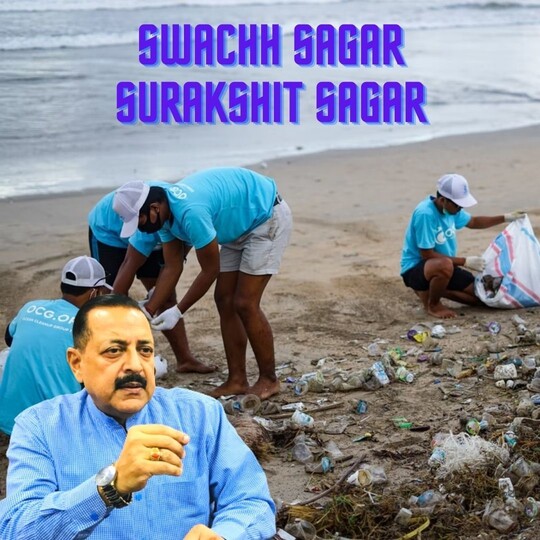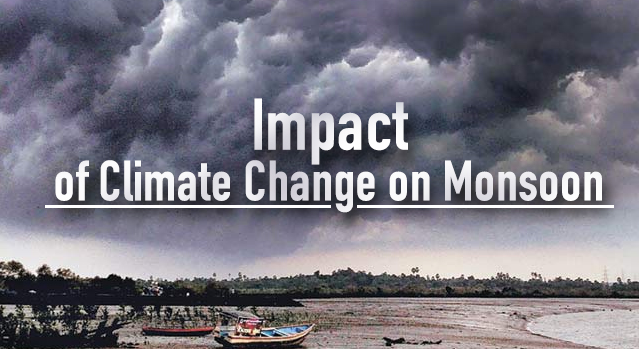Swachh Sagar Surakshit Sagar campaign (GS Paper 3, Environment)

Why in news?
- Recently, the largest coastal clean drive-up drive, on the occasion of International Coastal Clean-up Day (September 17) was flagged-off by Maharashtra Governor.
Participation:
- Indian Coast Guard (ICG) has conducted the International Coastal Cleanup drive in Mumbai.
- The ICG personnel alongwith more than 2000 children from various colleges and schools have cleaned the beaches at various locations of Mumbai like Juhu, Girgaon, Versova, Uttan, Madh Marve, Colaba, Bandra and Worli.
International Coastal Clean-up Day:
- The International Coastal Cleanup (ICC) day is conducted in various parts of the world in third week of September every year under the aegis of United Nations Environment Programme (UNEP) and South Asia Co-operative Environment Programme (SACEP) in South Asian Region.
- In 2022, the International Coastal Cleanup (ICC) Day has gained a positive momentum due to Prime Minister’s appeal for mass cleanliness and sanitation drive ‘Swachh Bharat Abhiyan’ and celebrations of ‘Azadi Ka Amrit Mahotsav’ on completing 75 years of Independence.
- The aim was to conduct cleanliness drive all along 7,500 km of Indian coast line at 75 beaches for 75 minutes with special emphasis on Plastic Free Ocean to commemorate 75 years of Independence.
Collaboration in India:
- The Indian Coast Guard has been co-ordinating ICC activity in India since 2006 to generate awareness among coastal populace and students towards safe & clean beaches.
- In addition to Indian Coast Guard, the ICC-22 is being spearheaded by Ministry of Earth Sciences (MoES), Ministry of Environment Forest and Climate Change (MoEFCC), National Services Scheme (NSS), National Disaster Management Authority (NDMA) and various other central & state Govt. Departments and Non-Government Organisations (NGO).
- A mobile application called ‘ECO-Mitram’ has been launched by the Govt. Of India on 05 Jul 22 to take the drive to every individual and the over-whelming response being received is testimony to the commitment of our woke-citizens to become a part of ICC-22.
How climate change is altering Indian monsoon
(GS Paper 3, Environment)
Context:
- Monsoon in India has undergone several changes over the years, especially on account of climate change.
- The Indian Meteorological Department (IMD) has clearly sighted that 2022 has seen the second highest extreme events since 1902.

Impacts of shift in monsoon systems:
- A shift in the track of monsoon systems, like low pressure and depression travelling south of their position and flash floods are a result of this change.
- And these changes spell intense and frequent extreme unprecedented weather events over the places which once struggled to record even normal monsoon rains.
- With this looming threat having a bearing on food security, it is only a matter of time before it has socio-economic impact.
- Persistence of intense La Nina conditions, the abnormal warming of East Indian Ocean, negative Indian Ocean Dipole (IOD), southward movement of most of the monsoon depressions and lows and pre-monsoon heating over the Himalayan region are melting glaciers.
Rainfall pattern:
- States such as Madhya Pradesh, Gujarat, Rajasthan and parts of Maharashtra have been recording excess rainfall in 2022.
- Usually, monsoon systems move across Northwest India giving rains over the region there. Experts believe that these changes are here to stay, which would continue to propel extreme weather events over the entire South Asian region.
- During the last six months, entire South Asia has been reporting a series of extreme weather events. While Bangladesh, Pakistan and India have battled severe floods, China is reeling under massive drought conditions.
- After a weak onset, monsoon went into a lull and so no activity was seen in Kerala and adjoining parts of Karnataka. By June, monsoon had reached the plains but the onset was not a strong one. This resulted in West Bengal, Jharkhand and Bihar not receiving normal rains.
- Back-to-back active monsoon systems in the Bay of Bengal in July led to excess rainfall to the tune of 8% — actual rainfall recorded was 472.8 mm as against the normal of 437.2 mm.
Rice production:
- The research shows that global warming increases the fluctuations in the monsoon, resulting in both long dry periods and short spells of heavy rains. This year, the monsoon was potentially influenced by La Nina also the cooler than usual Pacific conditions.
- One of the major impacts of changes in track of monsoon systems can be seen on kharif crops, particularly rice production. They form a significant share of more than 50% of total food grain production during this period.
- Bihar, West Bengal and Uttar Pradesh, which account for a third of the country’s total rice production, have been highly deficit despite an active monsoon current in July and August.
Impact on food grains:
- These uneven distribution rains along with increasing temperatures and humidity give rise to pest attacks and diseases. This will, in turn, impact the quality of the grain as well as the nutrition value may vary.
- According to a study, ‘Climate change, the monsoon, and rice yield in India’, very high temperatures (> 35°C) induce heat stress and affect plant physiological processes, leading to spikelet sterility, non-viable pollen and reduced grain quality.
- Drought, on the other hand, reduces plant transpiration rates and may result in leaf rolling and drying, reduction in leaf expansion rates and plant biomass, immobilisation of solutes and increased heat stress of leaves.
Concerns:
- Recent research indicates that monsoon rainfall became less frequent but more intense in India during the latter half of the 20th century. Scientists and food experts believe that a better rainfall scenario could have helped increase the harvest.
- However, India’s hundreds of millions of rice producers and consumers are being affected negatively with these unprecedented changes which are also raising concerns over food security.
New rules for child welfare panel members
(GS Paper 2, Governance)
Why in news?
- The recently amended rules for implementation of the Juvenile Justice Act, 2015, bar a person associated with an organisation receiving foreign funds to be a part of Child Welfare Committees tasked with giving necessary directions for care and protection of children who are abused, exploited, abandoned or orphaned.
Background:
- The Juvenile Justice (Care and Protection Amendment) Model Amendment Rules 2022 were notified on September 1 and came into effect immediately.
- This follows the passage of JJ Amendment Bill, 2021 in Parliament in July 2021.
Key amendments:
- The rules make several changes to aspects under the JJ Act including those that govern adoption, foster care, sponsorship, as well as modify eligibility criteria for Child Welfare Committees (CWCs).
- Rule 15 (4B) of the Model Rules 2021 states, “a person associated with an organisation receiving foreign contribution shall not be eligible to be a Chairperson or member of the Committee.”
- Rule 15 (4C) also says that any person working in the implementation of the JJ Act in any NGO or organisation such that it causes conflict of interest will also be ineligible to be on a CWC.
- It adds that those who have “any family member” or “close relation” working for an NGO will also be disqualified to be on a CWC.
- Any person working in rescue and rehabilitation in the district, or a person representing someone running a child care institution or member of the Board or Trust of any NGO can also not be on a CWC.
Retired judicial officers have also been omitted from the category of persons who can be considered for appointment to a CWC.

Powers of CWC:
- A CWC appointed by the State government under the JJ Act has the authority to dispose of cases of children in need of care and protection brought before them.
- It can also order an inquiry to ensure their safety and well-being and give an order for their rehabilitation either in family-based care such as through restoration to family or guardian, adoption, foster care or send them to child care institutions.
- Those on CWC have the power of a magistrate and also receive a salary from the government for 20 days in a month and are therefore equivalent to government officials, who are barred under FCRA from receiving foreign funds.
- According to the JJ Act, 2015, the CWC will function as a Bench and shall have the powers conferred by the Code of Criminal Procedure, 1973 on a Metropolitan Magistrate or a Judicial Magistrate of First Class.
Who are bared from receiving foreign funds?
- The Foreign Contribution (Regulation) Act, 2010, only bars certain categories of people and organisations from receiving foreign funds, which include candidates standing for elections, judges, government employees, member of any Legislature, political parties, journalists and media organisations.
- The law requires organisations receiving foreign funds to register and obtain a certificate provided they meet certain conditions, following which they have to maintain an account of funds received and a record of how it has been utilised.
- In 2017, the Ministry of Home Affairs, through the Finance Bill route, brought amendments to pave the way for political parties to receive funds from the Indian subsidiary of a foreign company or a foreign company in which an Indian holds 50% or more share.




